as published on Wild Hoofbeats
Carol is Director of Field Documentation at Wild Horse Freedom Federation
Day 2 of the Fifteenmile Roundup in Wyoming
We observers are on top of our rock formation after a very steep and treacherous long climb, and we are 1.5 miles from the trap where we cannot see the trap or the run into it despite our requests yesterday. We saw two groups come in, one with 45-50 horses that ran right in front of us, bays and pintos and three foals, one small sorrel with his mom bringing up the rear. Five broke off and had to be move back to the trap. Then a bit of a wait and another group behind rock formations and draws and we barely got a glimpse before they were moved into the trap – we are guessing 50. We had a bit later start today (2 hours later) because they loaded and shipped 127 horses to Rock Springs Corrals before the helicopter first took off. It is colder and more windy today.
the helicopter brought in a group of 15-20 wild horses from behind where the trap is hidden by the hills – we saw them from quite a distance. There was a lone bay stallion who had walked all the way down the same distance the others were running – perhaps he is lame. The helicopter brought the group in then went back for the line stallion and he did not push him hard, stayed well back and brought him in slowly.
Next they brought a group of 30-40 mostly bays and we spotted a lone pinto foal, after all the rest went into the trap. He was small and scared and fast. First they tried to push him with the helicopter then he ran round the vehicles then 5 wranglers came out to get him after he ran away from the wrangler on horseback. They picked him up and carried him in, he looked ok. We will ask about him when we go look at the horses. Then the helicopter went out again bringing 35 stunning pintos in at a run. We are done for the day except the potentially 2 hour wait to see the horses in temporary pens.
When we went to the temporary pens we found out that 217 horses had been brought in today by the helicopter and two young horses had died. We are waiting to hear what cause of death was. The foal that had been separated from its mother was reunited with her and in good shape. As we walked around the horses seemed calmer, even the stallions. They had a “keeper” pen for the mares and a “keeper” pen for the mares – the plan is to roundup and bring in 700 horses, almost all that they estimate are in and outside of the HMA then release 100 of them, skewing the sex ratio to 60 mares and 40 stallions. A normal mix in a Herd Management Area is 50-50 mares to stallions, and the idea is to slow population growth. In my experience, most notably in the nearest HMA in McCullough Peaks where the did approximately 33 stallions to 67 mares, this causes massive instability and chaos in the family bands, and lots of fighting and injuries in the stallions. This is no way to control population of wild horses.
When I asked why are they not giving birth control, such as PZP to the mares as they have them right there in the pens, easy to administer they said they are using this herd as a control group as it has never had any horse in this herd given birth control of any kind.
Tonight there is snow moving in so we are prepared to go out but weather may halt the roundup for a day, we will not know until we meet at the BLM office in the morning.
Categories: Horse News, Horse Slaughter, The Force of the Horse, Uncategorized, Wild Horses/Mustangs


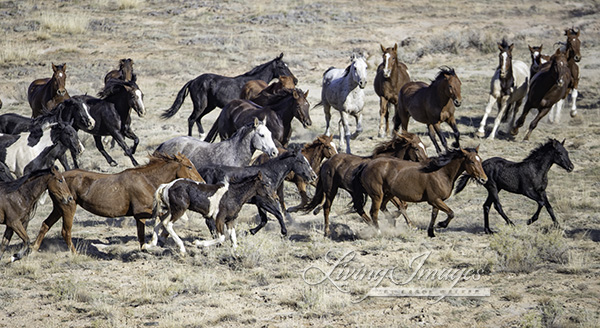
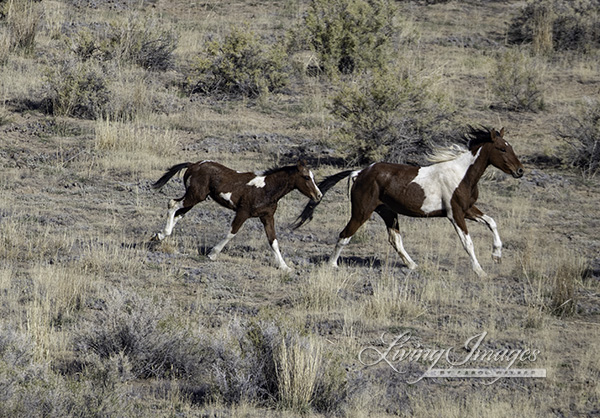
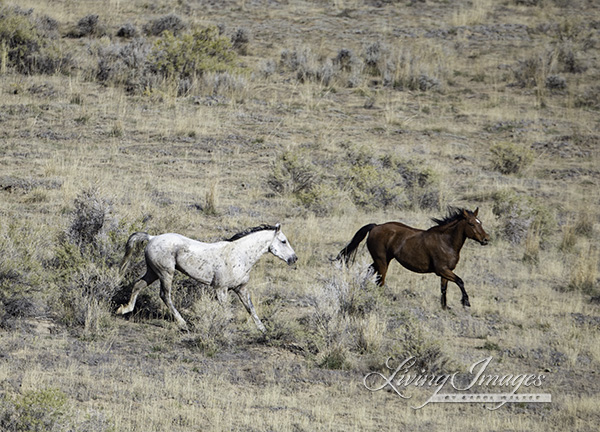
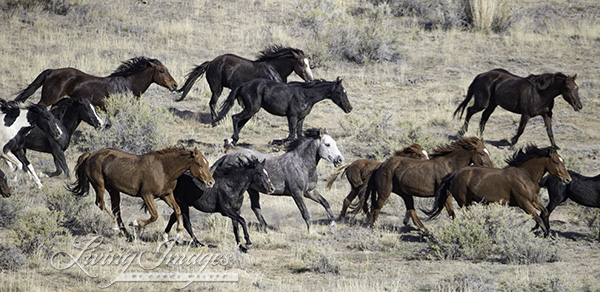
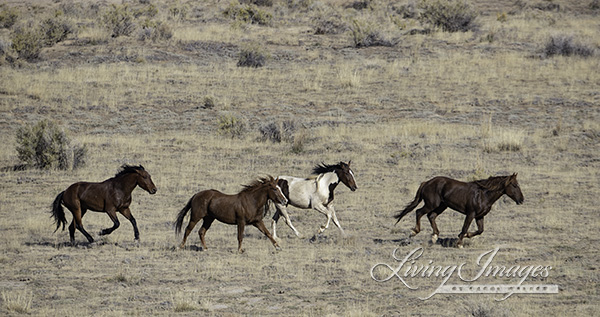
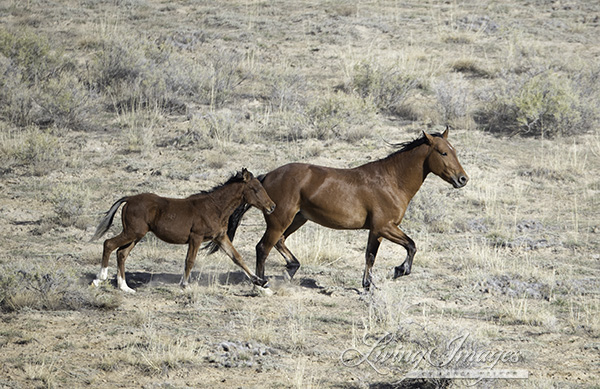
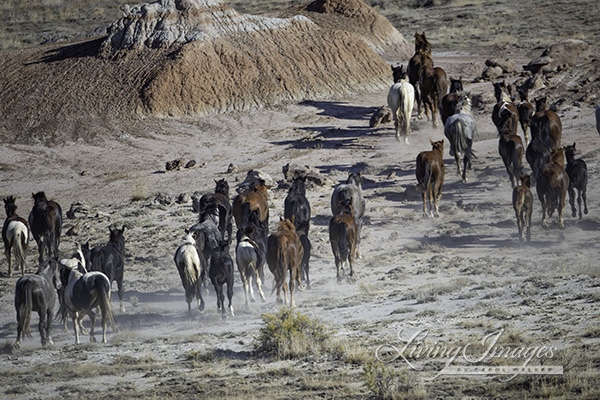
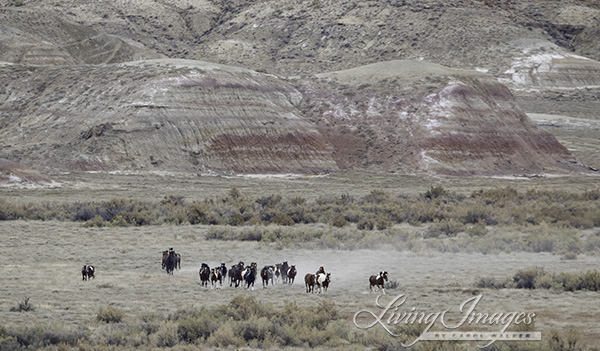

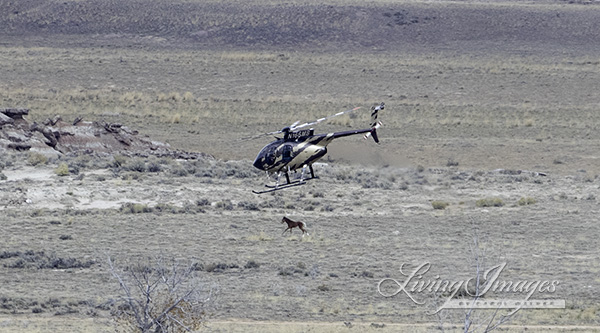
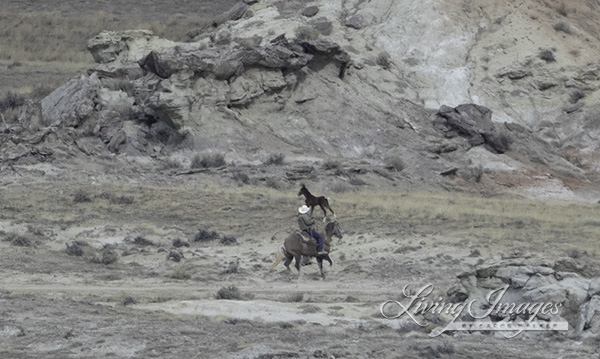
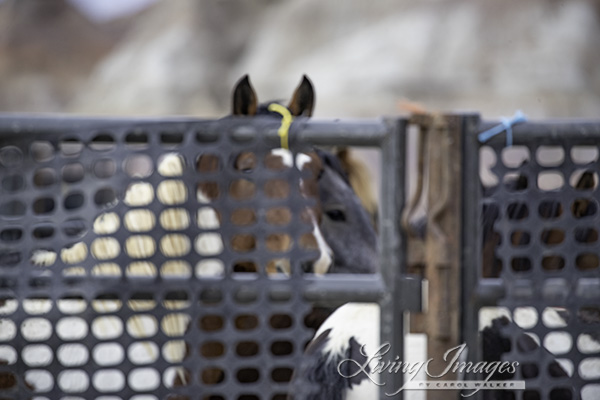
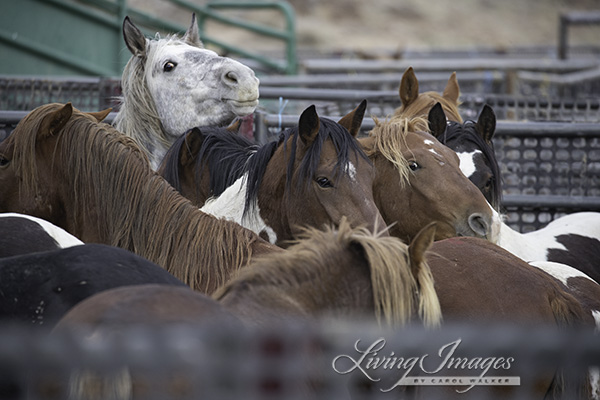







This is just too sad.
I watched a video about horse racing in Australia, and the brutality of what happens to those horses who just don’t make the grade. The whole slaughter house end for these horses was disgusting and demeaning to these amazing thoroughbreds who deserve nothing but our esteem and kindness.
I see the end of the line, for these amazing Mustangs, to be the same as these thoroughbreds, and I feel like crying.
Senseless roundups and senseless slaughter.
So sad, and so angry.
LikeLiked by 1 person
Look at the terror in the eyes of these horses!
“There you are, a wild horse leisurely passing the day on the open rangelands of western United States. Life is good—congenial herd mates, nice weather and enough to eat. Suddenly you are startled by movement and strange sounds behind you. All of your
senses instantly come alive—your eye sight sharpens and your hearing becomes more acute. You make a flash decision … run!”
” I don’t think it’s an exaggeration to say, as ‘gathers’ are routinely done in the USA, if a wild horse doesn’t die straight off from the immediate devastation and commotion, it compromises him/her physically and mentally, putting him on a path of accelerated deterioration.”
Above quotes are from Dr. Bruce Nock, PHD: “Wild Horse The Stress of Captivity”
Click to access Wild-Horse-Stress-1.pdf
LikeLike
As long as this corrupt government agency is allowed to “manage” our native wild horses – there will be no end to these senseless removals. Writing & commenting to this agency has done no good – doubt they even read (or comprehend) people’s comments. The lack of understanding or empathy is downright scary. Its full speed ahead – get rid of every impediment to fracking, drilling, mining or livestock grazing before the next election! Not that a change in government will make a difference but by another year – this government administration will cause such so much devastation to our NATIVE wildlife (wild horses, wolves, mountain lions, coyotes AND others) that it will be almost impossible to bring many populations back. Seriously, is this what we, the PEOPLE, are allowing to happen?
Looking at Carol’s wonderful pictures of these absolutely beautiful wild creatures – how can WE allow this to happen?
LikeLiked by 1 person
Consider for a moment the folly of skewing the gender ratios such that they leave far more mares than stallions. This is a recipe for genetic dilution at minimum, and the near certainty all the mares will become pregnant again (most are probably pregnant now) so where is the supposed management gain? It would make far more sense to leave more stallions than mares, as only a few stallions earn the right to breed, guaranteeing vigorous genes. The number of mares pregnant would be the same but the genetic strength far better.
It’s also sadly clear most of the gathered stallions will not end up adopted, but sold by the pound eventually. Mares and mares with foals have a better chance of finding an adopter.
So how is this considered professional management? How can these who work for us be held accountable, and yes fired, for what seems to be an endless policy of supporting private interests at the expense of the public interest, while simultaneously ignoring science, ethics, and logic. Even worse this is happening under an “acting” BLM Director, who has not been through any Congressional approval process, who has already said he will step aside when a real one is appointed, so he has zero interest in anything but a lethal legacy.
LikeLiked by 1 person
Yikes sorry my only excuse is yesterday was a very long day – sex ratio is to be skewed 60 stallions 40 mares. It is still a rotten management plan.
LikeLiked by 1 person
Thanks for the clarification, Carol, and for your endless good works!
LikeLiked by 1 person
So sad to see our wild horses being rounded-up to make more federal land available for private ranchers and livestock. Whose really destroying more grazing land?? Wild, “protected” horses or cattle??
LikeLiked by 1 person
It is worth pointing out again here that wild horses and burros are only allowed to exist on ~12% of all the public lands upon which grazing is permitted. So even if all our wild horses and burros were gone forever, the net gain to other grazers would be minuscule, and especially so if (as the BLM and other repeatedly claim) these lands are already in crisis. Removing some species only to introduce more, and in larger numbers, on degraded ranges will not magically increase biodiversity or rangeland health, and would probably endanger it even further.
LikeLiked by 1 person
This is an older video that has some photos that have since disappeared from the web..or at least from many of the websites
War on Wild Horses & Burros
LikeLiked by 1 person
THANK YOU Carol, This has to be gut-wrenching for you. Just know that your work is being circulated in all directions
LikeLiked by 1 person
Just a few excerpts and pertinent points from Craig Downer’s comment letter to BLM ( I think Craig won’t mind)
Fifteenmile HMAP & Gather
At an estimated 284 wild horses in 2016, the rate of population increase these wild horses are actually showing in no way supports your agency’s claim of 25% annual population growth. The proof is that BLM estimated ca. 100 wild horses in 2009. At a 25% annual increase, 100 horses would have given rise to 472 wild horses in 2016. Yet we observed only 284 wild horses. The facts indicate that this population is self-stabilizing as it fills is ecological niche. This process should not be interfered with but be carefully observed. It is very encouraging.
Furthermore, BLM range evaluation indicates that 97% of the HMA’s habitat is in good condition and that the wild horses are having a beneficial effect here.
Remember that Section 2 c of the WFHBA defines a wild horse/burro legal area as “the amount of land necessary to sustain an existing herd or herds of wild free-roaming horses and burros … and which is devoted principally but not necessarily exclusively to their welfare in keeping with the multiple use management concept for the public lands.” Clearly, this does not mean the wild horses should be marginalized within their own legal areas, nor that these legal wild horse/ burro areas and their resources should be given in their majority to livestock ranchers, mining companies, big game hunters, etc., yet this perversion of the law is exactly what appears to be happening!
Another point that should be made concerns the fact that the original HA has already been reduced by 180,783 acres (261,910 minus 81,127). Given this extreme reduction, it is only honorable, fair and just that in the remaining HMA home of these unique and special wild horses, they be given the “principal” share of the resources in order to realize a genetically viable population in the long-term. The current AML is hardly this! Therefore, I strongly urge BLM to increase the AML for this special herd to a level that will be at least 500 Mean AML, which is the IUCN SSC Equid Specialist Group recommendation for an equid population that due to extenuating circumstances has to be very tightly managed with stud book, mare and birth registry, etc. Furthermore, this expert group’s recommendation for an equid population to be genetically viable in the long term in a natural habitat is 2,500 individuals (see Duncan, P. 1992. Zebras, Asses, and Horses: An Action Plan for the Conservation of Wild Equids. IUCN SSC Equid Spec. Group. Gland, Switzerland). Since 500 is the population that the Worland BLM news release (1/31/2019) indicates the Fifteenmile herd is approaching, I would say: Great! Leave it alone then. It is filling its niche and this population would be equivalent to 162 acres per individual horse given an HMA of 81,127 acres, or of 524 acres per individual horse within the original 261,910-acre HA. We should study them to see how beautifully they are managing on their own, not violently disrupt their great harmony!
I further urge you to restore as much of the original HA acres as possible and also to expand this wild horse habitat into other areas in order to make it as complete and long-term-viable a habitat as possible. This you can do by setting up Cooperative Agreements as intended through Sections 4 and 6 of the WFHBA. An AML of only 70 to 160 horses is a set up for inbreeding and decline; and the 60%-male to 40%-female skewing of the herd’s sex ratio would cause social disruption, great stress in both stallions and mares, and be very much contrary to the true and core intent of the WFHBA! In upshot, this unanimously passed law is positive, not negative, in its attitude toward the wild horses and burros and their living naturally on the land they are meant to occupy!
Craig C. Downer, Wildlife Ecologist
https://thewildhorseconspiracy.org/2019/03/03/fifteenmile-hmap-gather/
LikeLiked by 1 person
This is a MAJOR point for this and most other wild horse and burro lands … “the original HA has already been reduced by 180,783 acres”!
LikeLike